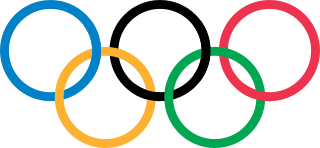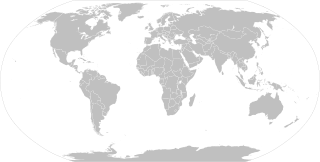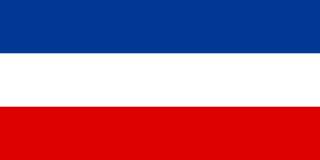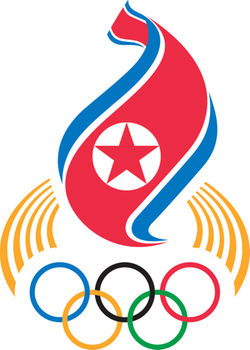
Athletes from Belarus began their Olympic participation at the 1952 Summer Games in Helsinki, Finland, as part of the Soviet Union. After the Soviet Union disbanded in 1991, Belarus, along with four of the other fourteen former Soviet republics, competed in the 1992 Winter Olympics as the Unified Team. Later in 1992, Belarus joined eleven republics to compete as the Unified Team at the Summer Games in Barcelona, Spain. Two years later, Belarus competed for the first time as an independent nation in the 1994 Winter Olympics, held in Lillehammer, Norway.

Ten cities submitted bids to host the 2008 Summer Olympics and Paralympics that were recognized by the International Olympic Committee (IOC), five of which made the IOC Executive Committee's shortlist. The games were awarded to Beijing, China on July 13, 2001. The other shortlisted cities were Toronto, Paris, Istanbul and Osaka. Beijing won an absolute majority of votes after two rounds of voting, eliminating the need for subsequent rounds of voting. IOC delegates and the media identified a number of factors in its favor, including the size of the country, improvements in Chinese anti-doping enforcement, and its close loss to Sydney, Australia eight years earlier. In that bidding process, which chose the host city for the 2000 Summer Olympics, Beijing led every round of voting but lost in the final round to Sydney by two votes.

National Olympic Committees that wish to host an Olympic Games select cities within their territories to put forth bids for the Olympic Games. The staging of the Paralympic Games is automatically included in the bid. Since the creation of the International Olympic Committee (IOC) in 1894, which successfully appropriated the name of the Ancient Greek Olympics to create a modern sporting event, interested cities have rivaled for selection as host of the Summer or Winter Olympic Games. 51 different cities have been chosen to host the modern Olympics: three in Eastern Europe, five in East Asia, one in South America, three in Oceania, nine in North America and all the others in Western Europe. No Central American, African, Central Asian, Middle Eastern, South Asian, or Southeast Asian city has ever been chosen to host an Olympics.

The all-time medal table for all Olympic Games from 1896 to 2022, including Summer Olympic Games, Winter Olympic Games, and a combined total of both, is tabulated below. These Olympic medal counts do not include the 1906 Intercalated Games which are no longer recognized by the International Olympic Committee (IOC) as official Games. The IOC itself does not publish all-time tables, and publishes unofficial tables only per single Games. This table was thus compiled by adding up single entries from the IOC database.

Seven cities submitted bids for 2016 Summer Olympics and Paralympics on September 13, 2007, aiming to host the Games of the XXXI Olympiad. All of them were recognized by the International Olympic Committee (IOC) on September 14, 2007, becoming Applicant cities. Although several cities submitted to be in consideration to host the 2016 Olympics, including New York City and Los Angeles, on June 4, 2008, the IOC Executive Board shortlisted the four strongest bids to become Candidate cities. Those cities were Chicago, Madrid, Rio de Janeiro and Tokyo; the decisions were made during a meeting in Athens, Greece. The remaining Applicant cities—Baku, Doha and Prague—were eliminated.

The Chinese Olympic Committee is the National Olympic Committee of China. It is headquartered in Dongcheng, Beijing, China.

Teams from Yugoslavia first participated at the Olympic Games in 1920. Previously, several athletes from Croatia, Slovenia and northern Serbian province Vojvodina had competed for Austria or Hungary when those countries were part of the Empire of Austria-Hungary. A small team of two athletes had competed distinctly for Serbia at the 1912 Summer Olympics.

The former State Union of Serbia and Montenegro was represented at the Olympic Games on six occasions between 1996 and 2006, when the union was dissolved and Montenegro and Serbia each declared full independence.

The People's Republic of China (PRC) sent a delegation to the Olympic Games for the first time at the 1952 Summer Olympics in Helsinki, Finland.

The Olympic Games ceremonies of the Ancient Olympic Games were an integral part of these Games; the modern Olympic games have opening, closing, and medal ceremonies. Some of the elements of the modern ceremonies date back to the Ancient Games from which the Modern Olympics draw their ancestry. An example of this is the prominence of Greece in both the opening and closing ceremonies. During the 2004 Games, the medal winners received a crown of olive branches, which was a direct reference to the Ancient Games, in which the victor's prize was an olive wreath. The various elements of the ceremonies are mandated by the Olympic Charter, and cannot be changed by the host nation. This requirement of seeking the approval of the International Olympic Committee (IOC) includes the artistic portion of opening and closing ceremonies.

The Olympic Committee of the Democratic People's Republic of Korea is the National Olympic Committee (NOC) representing North Korea.
Jan Marinus Jongkind was a sailor from the Netherlands, who represented his country at the 1964 Summer Olympics in Enoshima. Jonkind, as crew on the Dutch Dragon took the 13th place with helmsman Wim van Duyl, fellow crew member Henny Scholtz and Dick Wayboer.
Jacob "Jaap" Helder is a sailor from the Netherlands, who represented his country at the 1960 Summer Olympics in Naples. After the 5th race Gerard Lautenschutz, who was crewing on the Dutch Flying Dutchman Daisy (H102), needed to go home due to family circumstances. Helder with helmsman Ben Verhagen crewed the last three races. The team took 5th place.
Dirk "Dick" Wayboer is a sailor from the Netherlands, who represented his country at the 1964 Summer Olympics in Enoshima. Wayboer, as crew on the Dutch Dragon took the 13th place with helmsman Wim van Duyl, fellow crew member Henny Scholtz and Jan Jongkind.

Hans Boudewijn Binkhorst was a Dutch sailor who represented his country at the 1968 Summer Olympics in Acapulco. Binkhorst, on the Dutch Finn, took the 19th place. Since in 1980 The Netherlands did boycott the Moscow Olympic Games Binkhorst in the Star represented his National Olympic Committee under the Dutch NOC flag. With crew member Kobus Vandenberg. They took 6th place. The last Olympic appearance of Binkhorst was during the 1984 Olympics again in the Star and this time with crew Willem van Walt Meijer. They took 8th place.
Cornelis "Cor" Groot was a sailor from the Netherlands, who represented his country at the 1968 Summer Olympics in Acapulco. Groot, as helmsman on the Dutch Dragon, took 10th place with crew members Jan Bol and Pieter de Zwart. Groot was also the substitute helmsmen for the 1964 Dutch Dragon.











